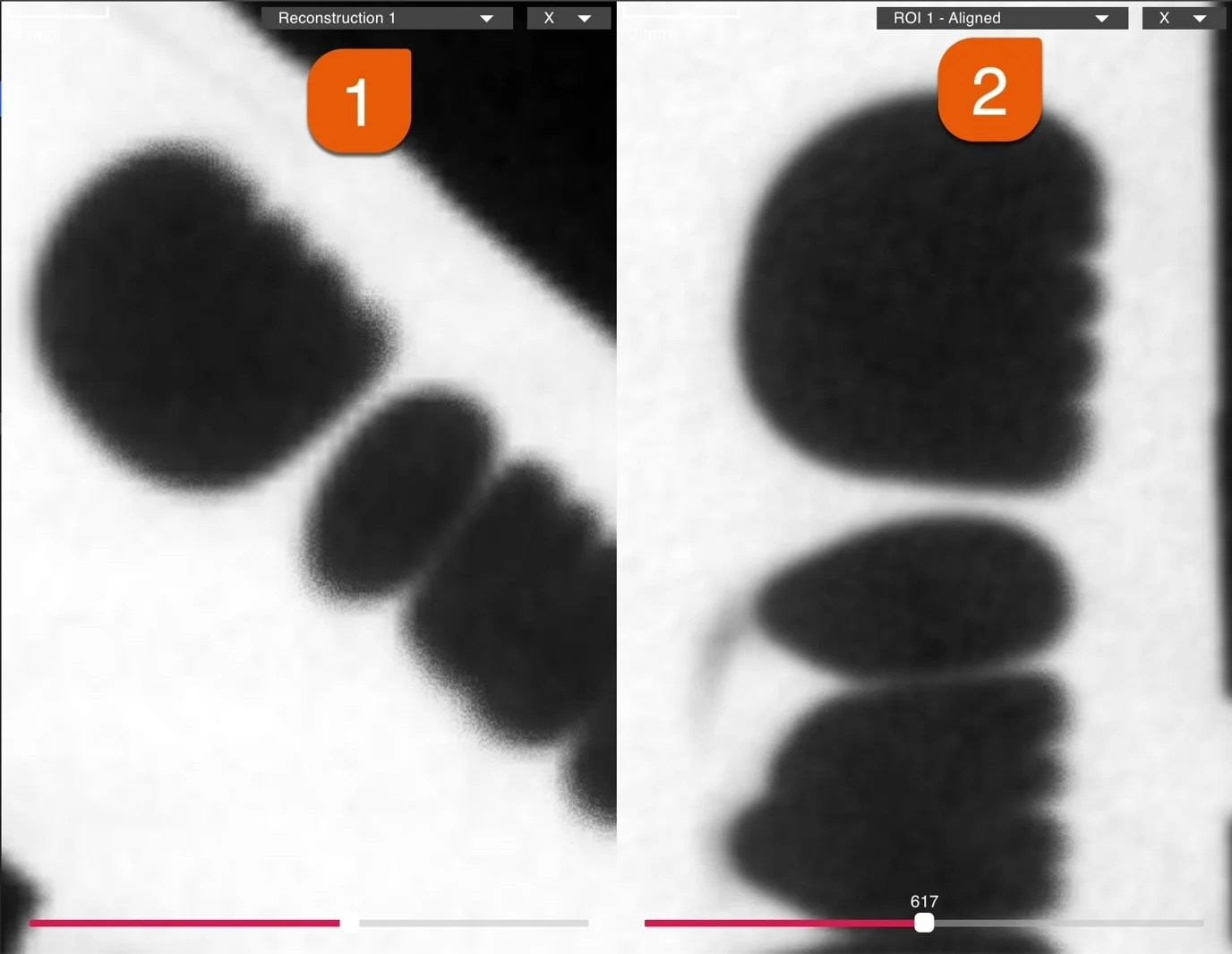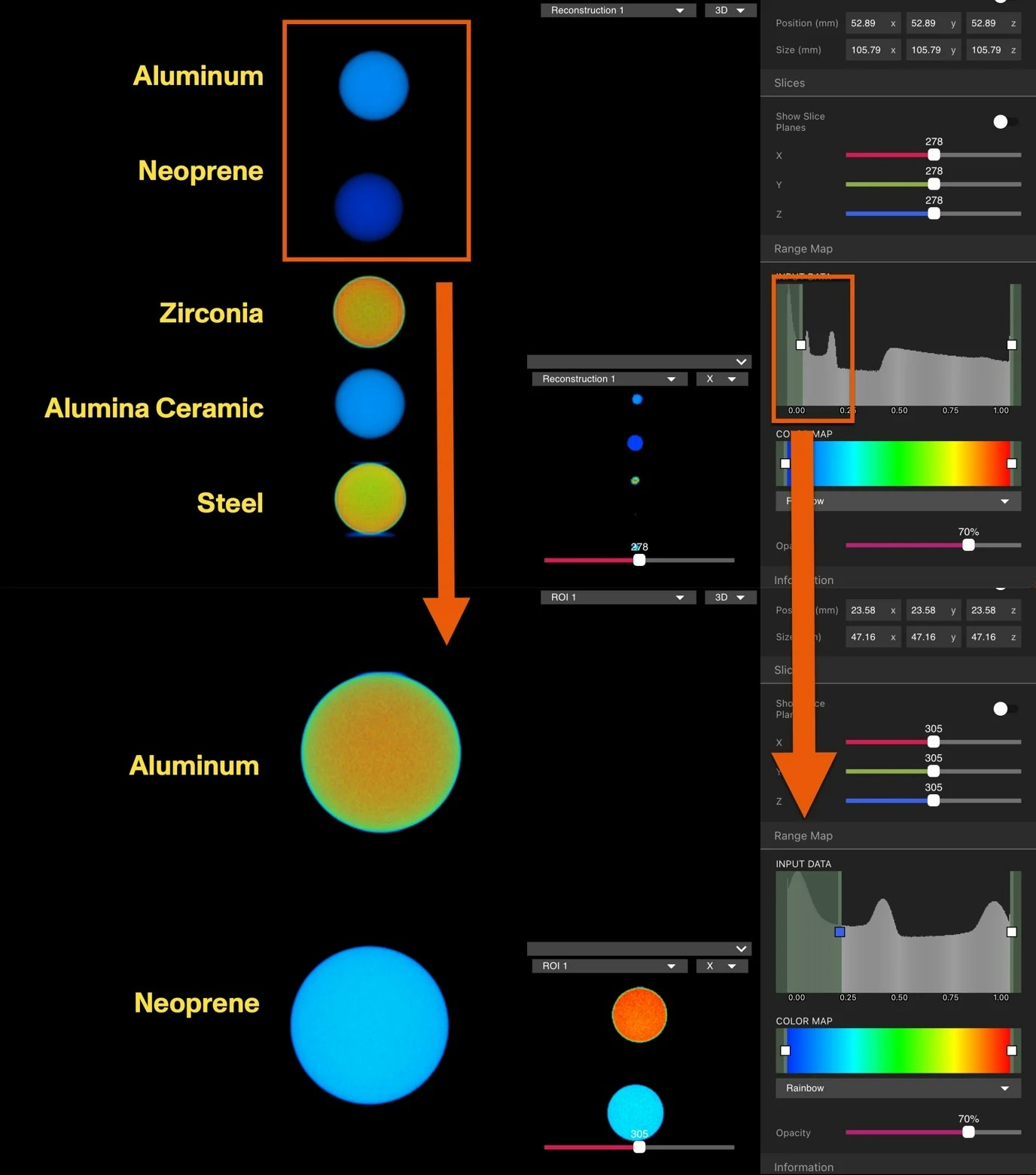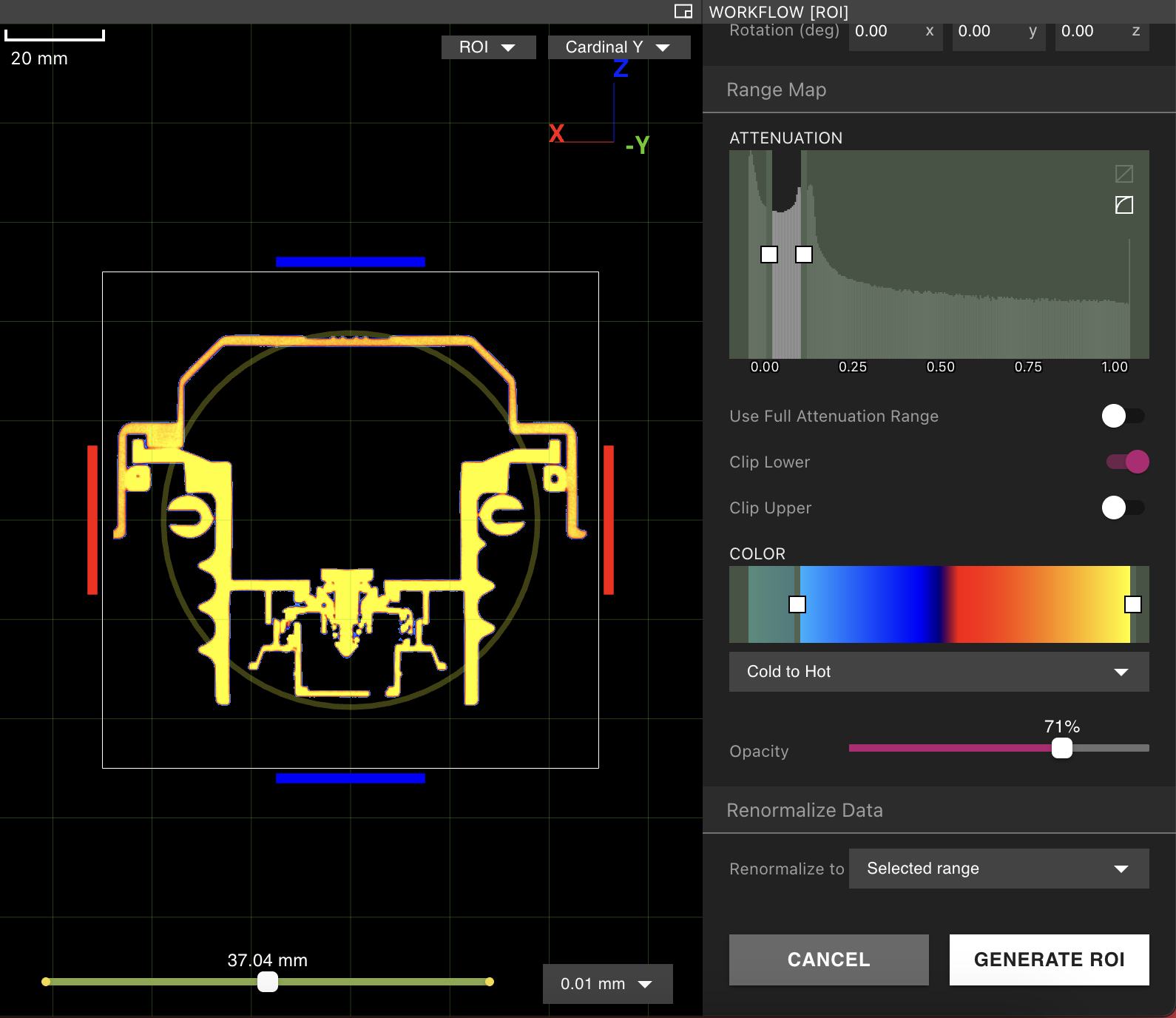Skip to main contentAn ROI (Region of Interest) lets you isolate and work on a focused subset of your scan. By defining an ROI, you can exclude unwanted materials, align geometry to a desired coordinate system, increase effective resolution via digital zoom, and optimize contrast for downstream analysis.
If you’re looking for step-by-step instructions on creating an ROI, see the how-to guide:
Benefits of ROI
- Align the Scan Orient your part to a specific, user-defined coordinate system for standardized measurements and comparisons across projects.
- Enhanced Resolution (Digital Zoom) Increase effective resolution in critical areas by reducing the working volume. This is especially helpful when inspecting fine details such as porosity or small features.
- Improved Contrast Focus the intensity range on the densities that matter, making visual inspection and downstream analysis clearer and faster.
- Exclude Unwanted Materials Exclude fixtures, tape, gantry components, or other unwanted materials and renormalize to focus on the part you’re analyzing.
Alignment
Use ROI rotation handles to orient your part to your preferred axes. This helps standardize measurements and comparisons across projects.

- After alignment, dimensions and comparisons become more repeatable. See Inspection Planes for taking measurements once aligned.
Location & Bounds
Define precise boundaries around your region of interest to isolate the area you want to analyze. Tighter crop boxes reduce data volume, improving software responsiveness and maximizing effective resolution in critical areas.
For workflows requiring tight dimensional accuracy on local features, combine focused cropping with ISO-50 Mesh + Dimensioning or CAD Comparison.

Enhanced Resolution (Digital Zoom)
ROIs can increase effective resolution in the area you care about by reducing the working volume. This is especially helpful when inspecting fine details such as porosity or small features.

Enhanced Contrast
Exclude materials outside your area of interest to improve contrast on the features that matter. This can make visual inspection and downstream analysis clearer and faster.

- If you need to adjust material appearance further, explore Renormalization to remap intensity values on the ROI for better visibility of structures.
Renormalization
Renormalization can be applied to an ROI to adjust intensity mapping and highlight the density range you care most about. This is helpful when you want consistent visualization or to separate materials for analysis.
 Learn more: Renormalization in Voyager
Learn more: Renormalization in Voyager
Best Practices
-
Recommended workflow order: While you can work through the ROI panels in any order, the best results come from working sequentially:
- Data Range first – adjust visualization to see what matters
- Orientation second – align your part
- Location & Bounds last – refine the crop box
-
Keep ROIs tight: Make them as focused as practical to maximize effective resolution and software responsiveness.
-
Name ROIs clearly: ROIs appear as siblings under their parent reconstruction in the project tree. Descriptive names help you track multiple ROIs.
-
Use ROIs as workflow inputs: Feed ROIs into recipes and analyses (e.g., porosity, inclusions, crack detection) to focus computations on relevant regions.
-
Leverage ROI chaining: You can create an ROI from another ROI to progressively refine your focus area.




